Adding a second monitor can help you stay productive and organized. If you’re the type of person who opens lots of programs at once, fitting all of them in one monitor can quickly clutter up your screen. With two monitors, you can have a full-screen Zoom meeting on one screen while you show a full-screen presentation on the other. Here’s everything you need to know about how to set up dual monitors on a Windows 10 computer and how to customize your second monitor.
Before you begin:
Check if your GPU supports dual monitors. You can go online and check the specs of your GPU on the manufacturer’s website. This information will be typically labeled as “Number of Displays” or something similar.
Read More: How to check your specs on a Windows 10 PC
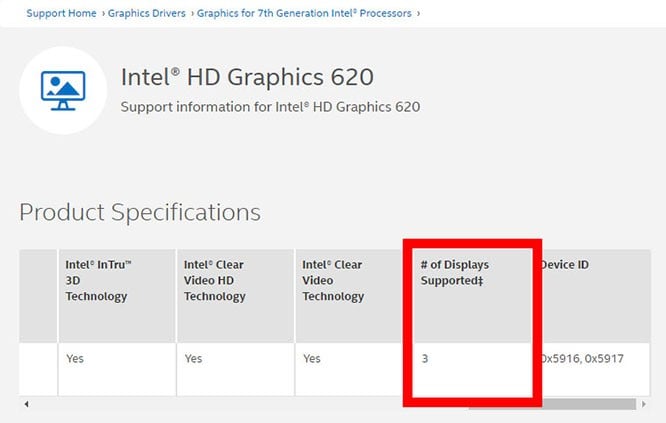
How to Set Up Dual Monitors on Windows 10
To set up dual monitors on a Windows 10 PC, press the Windows + I keys on your keyboard to open a Settings window. Then go to System > Display and select Extend these displays under the Multiple displays section. Finally, rearrange your monitors and click Apply.
- Connect a second monitor to your computer. The most common video ports on newer Windows 10 PCs and monitors are HDMI and DisplayPort. You might also be able to connect your laptop to a second monitor using a USB-C port. If you are connecting to an older monitor, you might need to use VGA or DVI ports.

- Then, press the Windows + I keys on your keyboard. Pressing these keys at the same time will open a Settings window.
- Next, click System. If you don’t see this option, click the back button in the top-left corner of the window until you reach the home screen.
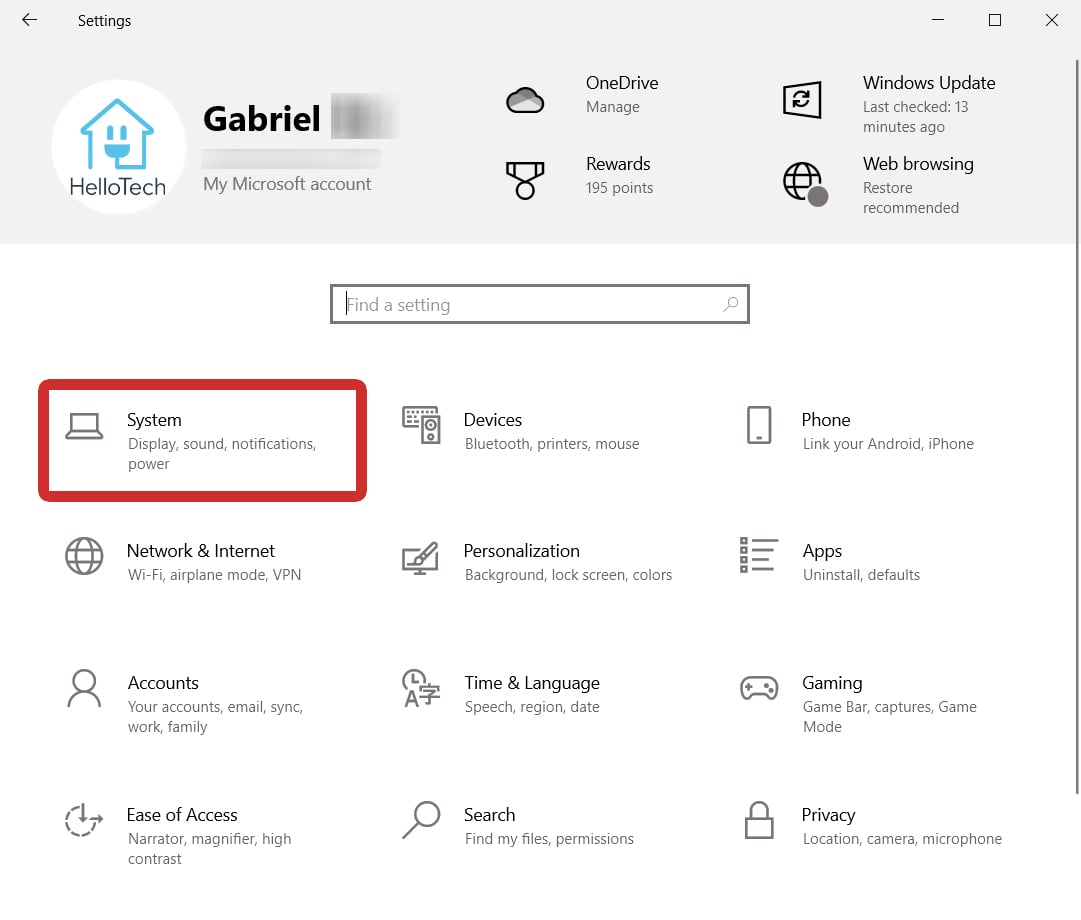
- Then, click Display. You will see this option in the left sidebar.
- Next, select Extend these displays under the Multiple displays section. Scroll down the right side of the Settings window to find this drop-down menu.
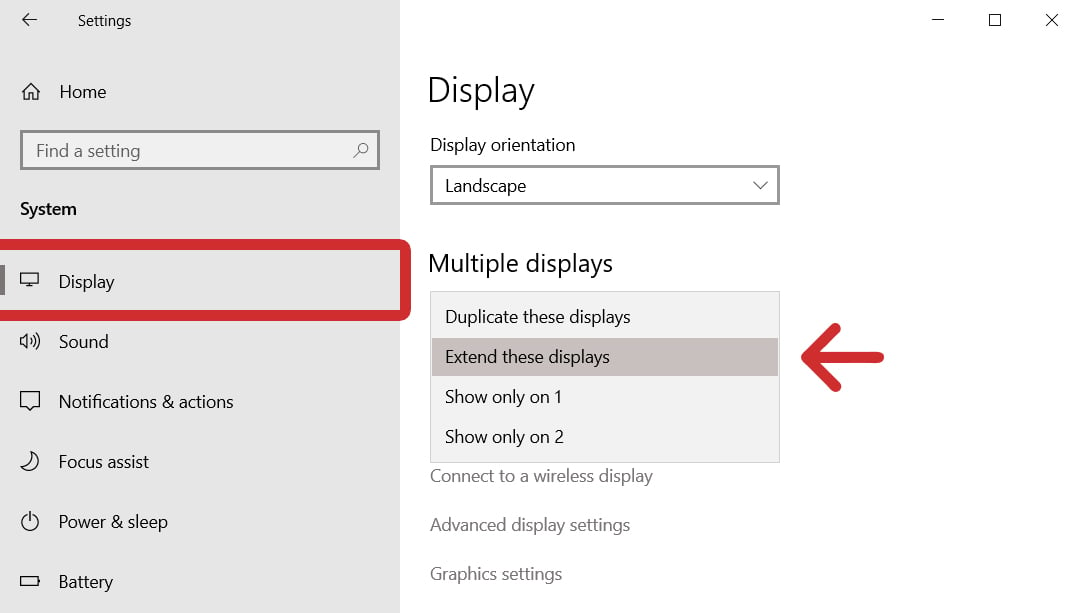
- Then, scroll up the Display menu to rearrange your displays. All you need to do is click and drag the boxes to rearrange your monitors. You want the boxes on screen to match the orientation of your monitors in real life. This will ensure that your mouse moves properly between the two monitors.
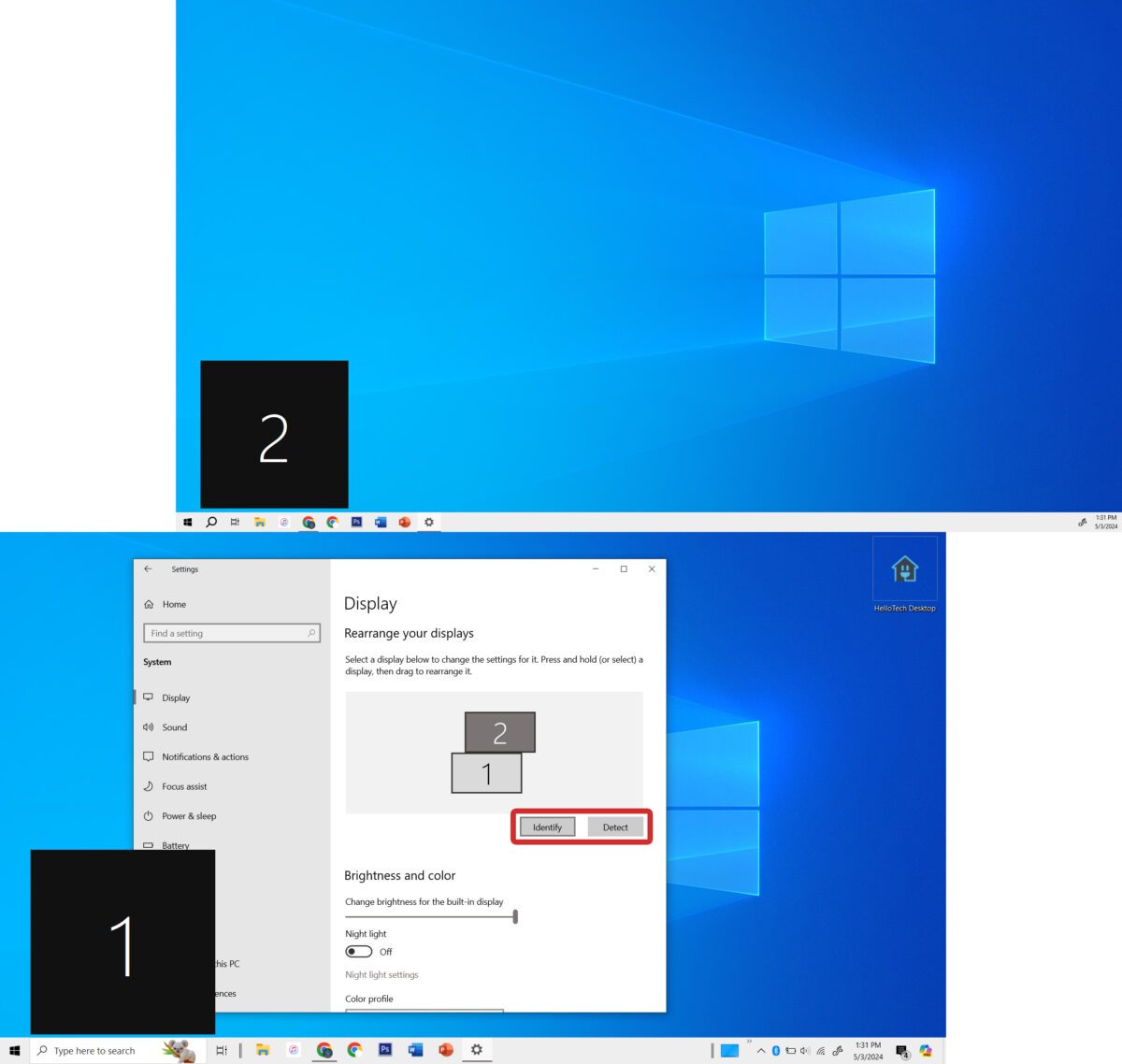
- Finally, click Apply.
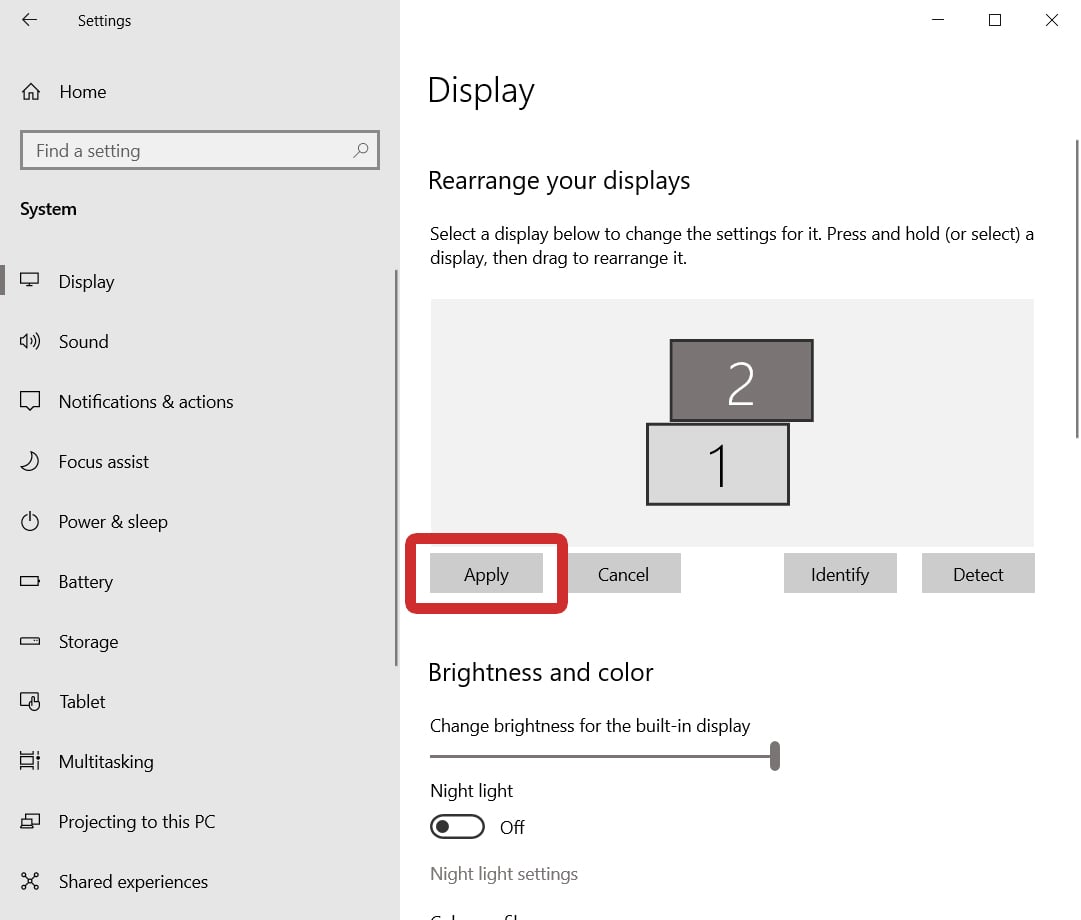
How to Personalize Your Second Monitor
Once you have set up your dual monitors, you can personalize them by changing the resolution and scale of each monitor, adding a taskbar to your second monitor, and changing the background image of each monitor. Here’s how to personalize your dual monitor setup.
How to Change Your Second Monitor’s Resolution and Scale
To change the resolution of your dual monitor setup, go to Settings > System > Display. Then scroll down to the Scale and layout section. Select the resolution and scale that you want from each drop-down menu.
Note: Make sure you have selected the monitor you want to modify in the Rearrange your displays section first.

Windows will give you a list of screen resolution and scale options, but it will also tell you which settings are recommended for your monitors.
How to Add a Taskbar to your Second Monitor
To add a taskbar to your second monitor, right-click on the taskbar at the bottom of your main monitor and select taskbar settings. Then scroll down to the Multiple displays and turn on the slider for Show taskbar on all displays.

From here, you can also choose to show all your taskbar buttons on both monitors, or only show the application icons that are open on the second monitor. However, only one taskbar will have the time, toolbar buttons, and the notifications button.
If you want to change which monitor has the main taskbar buttons, you can go to Display settings, select a monitor, and click Make this my main display. This will also move all of your desktop items to that monitor.

How to Change Your Second Monitor’s Background Image
To change your second monitor’s background image, go to Settings > Personalization > Background. Then, choose Picture from the drop-down menu under Background. Finally, right-click one of the images and click Set for monitor 2.
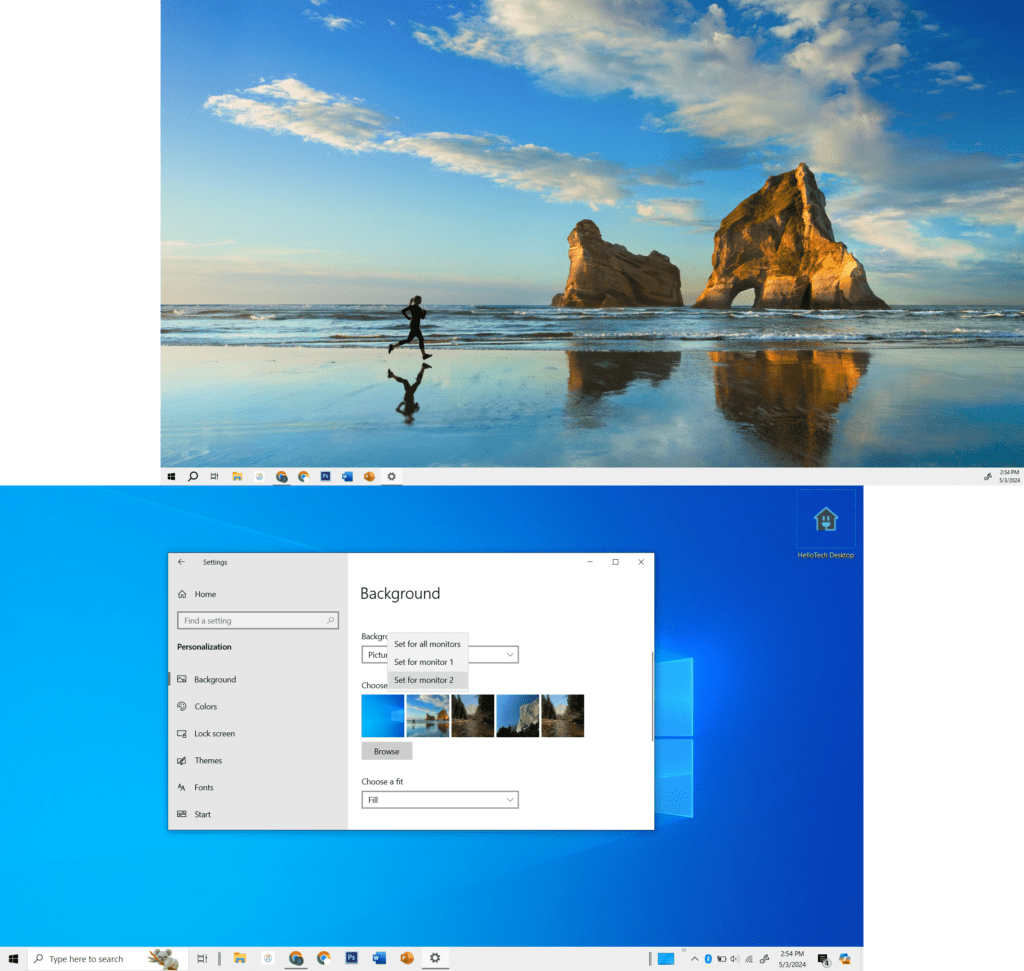
Read More: How to keep your laptop on when it’s closed
HelloTech editors choose the products and services we write about. When you buy through our links, we may earn a commission.
